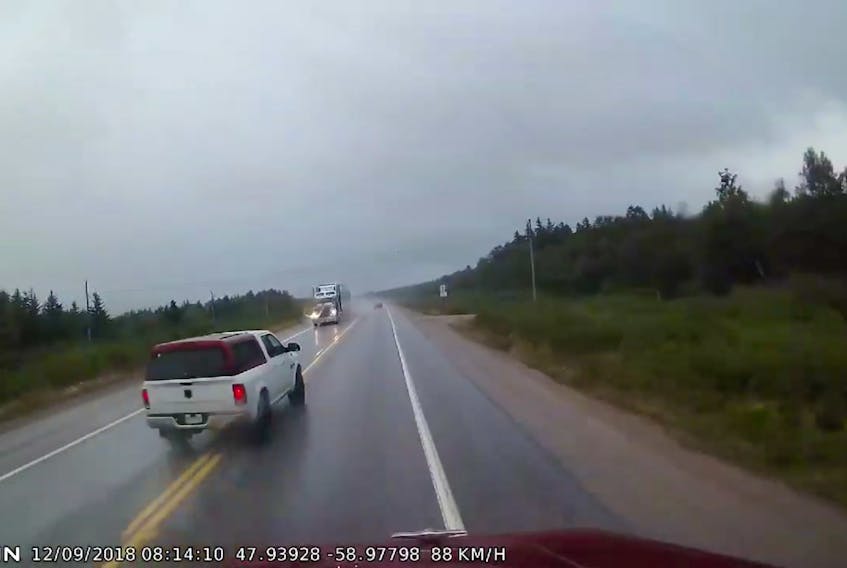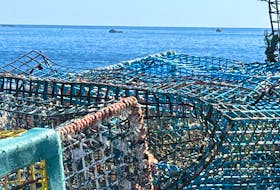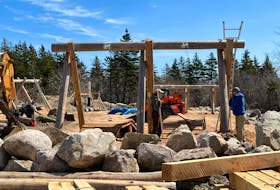
PORT AUX BASQUES, N.L. — A recent video of a speeding vehicle illegally passing one transport trailer - only to narrowly miss colliding with another oncoming trailer in South Branch - is a pretty common occurrence, according to a few transport drivers.
Shawn Hughes has been driving tractor trailers for 20 of years. Based out of Flowers Cove on Newfoundland's Northern Peninsula, he journeys regularly throughout the Atlantic provinces.
He's seen a lot of similar close calls.
“The biggest problem in Newfoundland is there’s very few passing lanes and the passing lanes that you do have are uphill.”
He offers up an example of the root of the problem.
I wonder if this guy knows how close he came to ending his life. ( this video contains some not so nice language )
Posted by David S Knee on Sunday, September 16, 2018
“Speed is not the issue. It’s the difference in speed,” says Hughes. “If everybody is going 120, no one’s got an issue. If everyone is going 60, no one’s got an issue. Now one driver doing 120, another doing 60? You’ve got an issue.”
Such a big difference between two vehicles with no passing lane for kilometres can prompt some motorists to pass illegally at dangerous speeds. Hughes believes that a divided highway would likely help alleviate the problem.

He contrasts the lack of passing lanes in Newfoundland with that of Nova Scotia, which has a substantial divided highway system.
“Definitely, 100 per cent safer,” maintains Hughes. “If you’ve got a passing lane and nothing coming towards you ... that incident (in South Branch) … you’d have never seen that if it was on a divided highway.”
Hughes notes that Terra Nova and Gros Morne parks have added more passing lanes.
Hughes says this helps, not only when it comes to slower drivers or transport trucks, but even with tourists, particularly those who visit the province in campers, which, like tractor trailers, typically drop speed on inclines.
“I would make a push for a divided highway, that’s what I would make a push for, but you’ve got to fight your battles. So start off with passing lanes.”
Inconsistent rules
Just adding passing lanes probably isn’t just enough though. Hughes would also like to see consistent rules from province to province.
For example, in Newfoundland, the inner lane has right of way and the left outer lane must yield, whereas in Nova Scotia, it’s the other way around. That can cause confusion, particularly for tourists and other out-of-province drivers.
“At what point does the left lane yield to the right?” asks Hughes.
For transport drivers passing a slower motorist, there is sometimes not enough room to fully complete the pass before the lane ends, and slowing quickly to allow the other lane to merge back into traffic is not something a transport truck is even capable of, regardless of what the rules mandate.
Sometimes, says Hughes, other drivers don’t realize just how hard it is for transport trailer to adjust quickly. A close call in Whitbourne not long ago quickly springs to mind.
“I had a car pull out in front of me and I had to lock on my brakes.”
"If every driver on this island for one day, just one, turned in their dash cams, that evening it would put half the drivers in this province out of a license." — Adam Leyte, transport truck driver
Luckily, Hughes was hauling a full load of potatoes, which is considerably heavier than the half-load of pumpkins he had as freight the week before. Had it been the other way around, he would very likely have crushed the vehicle who cut him off.
He also thinks construction zones can play a factor.
“I think construction companies are making their own problems there,” says Hughes. He agrees motorists definitely need to slow down when entering a zone where work is being done, but when no work is being done, it would be safer to drop or cover the signage.
“If you’re going through a site four times in one day and there’s nobody there, the fifth time when you go through there, are you slowing down?”
'No fingernails left'
Darlene Frye-Brennan and Adam Leyte have been driving transport trucks for 17 or 18 years. Brennan is based out of Clarenville, N.L. while Leyte hails from Port aux Basques, N.L. Her trips take her regularly throughout Canada and even into the United States, while Leyte usually keeps primarily to Newfoundland.
Like Hughes, they both have seen their fair share of close calls, enough to agree that a divided highway system would be safer for all motorists.
“You take one trip across the island with me and you will have no fingernails left by the time you get to St. John’s,” promises Brennan.

She says lead-footed drivers are common everywhere, but Newfoundland’s road systems don’t help.
“The thing with Newfoundland is we’re mostly one-lane roads. When you get everywhere else you’ve got double lanes, so you’ve got a better chance.”
“If every driver on this island for one day, just one, turned in their dash cams, that evening it would put half the drivers in this province out of a license,” believes Leyte.
Rule of the road: respect
Deon Fillier is another transport driver, and like his colleagues, he has far too many horror stories. Recently, he was on the road in New Brunswick during a blizzard. During severe whiteout conditions, a motorist in a sports car sped past him and rear-ended a colleague up ahead.
“There’s one simple rule to the road and that’s respect. If it’s too bad, go home,” says Fillier, who spent 18 hours in Edmundston, NB waiting for the storm to pass.
Rain or snow are bad enough, but throw in high-speed winds in spots like the Wreckhouse in Newfoundland and conditions become outright hazardous.
Drivers must make a hard choice, and several factors can come in to play, such as deadlines and freight. Missing a drop when there are perishable goods aboard can even result in fines to a company. Nobody wants to buy rotten produce. But high winds at the Wreckhouse don’t automatically necessitate delays.
“It all depends on the weight on your trailer and how it’s loaded,” says Leyte, who typically hauls lumber. Bobtailing - just the truck without a trailer - is usually pretty safe.
“Usually, anything above 60 (km/h) with an empty trailer, you’re asking for trouble. It’s like playing Russian roulette.”
'You see horrible things'
When she worked a dispatcher and if it was coming from the southeast, Brennan warned drivers not to go through if the winds exceeded 70 km/h.
Like the others, Brennan has similar tales about drivers not respecting changing road conditions only to meet with disaster. She once witnessed the aftermath of a tragic accident.
“That was once too many,” she admits. And while some will pass without a second glance, there are others whose first thoughts seem to be of social media.
“You’ve got others who will slow right down just to take pictures.”
Leyte runs a Facebook page called Newfoundland Trucker Group. Although truckers witness more than most other drivers, the group does not allow posting of accident photos or videos.
He once tried his best to help after chancing upon a van that had rolled. He brought his truck to a stop, dialed 911 and raced into the ditch where the vehicle had come to rest.
“I’m crawling in through the back of the van. I find her. She was alive when I got in. She wasn’t when I got out. I never got out until the paramedics got there.”
“You see horrible things,” says Brennan. “Sometimes, I think the ones that just drive on by have got the right idea. I couldn’t do that. You never know what you’re going to see. We’re not paramedics, but we’re not going to go and leave somebody in a ditch either.”
Read more about our Need for Speed, its risks and consequences
Twitter: @tygerlylly









